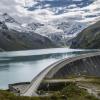27 June 2024
In the fairSTREAM project, IIASA researchers from the Equity and Justice, Water Security, and Biodiversity, Ecology, and Conservation research groups aim to address issues of fairness. This is crucial for managing risks in nexus challenges where conflicting views on procedural and outcome fairness often remain unresolved and jeopardize finding solutions.



